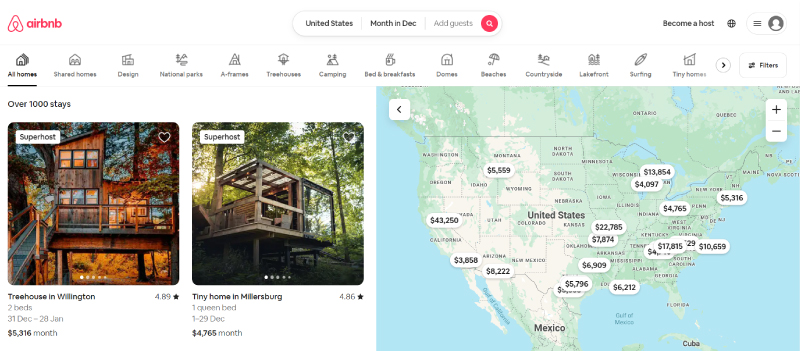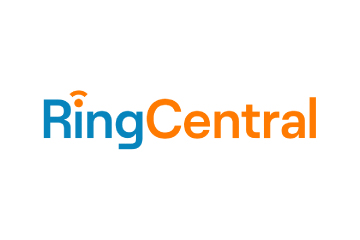BRAND STORY Leading brands like Airbnb use data as the voice of the customer at scale, it has invested in building an in-house modern data architecture and infrastructure. What marketers can learn about data in storytelling
Data, data, data – the marketing gold for brands. But is data alone capable of improving results? Marketers need to do what they do best – tell stories and use data as a tool to inform those narratives. Welcome to the world of data storytelling. It exists at the intersection of hard data and human communication.
With data storytelling, brands make better decisions about what to say, and to whom. It can help teams create powerful and effective content that resonates with the right audience, and improve content marketing operations.
Airbnb is the right fit, to begin with. “The importance of data as a philosophy was baked into the DNA of Airbnb from the beginning,” said Michael Curtis in a company post when he was Airbnb’s VP of Engineering. The company views data as the voice of their customer at scale, and to better utilize it; it has invested in building an in-house modern data architecture and infrastructure early on. Let’s take a look at two data storytelling campaigns and peek into the tech behind it:
- Bringing human dimensions to its offerings: The first point of interaction with its users, Airbnb understands, is through photos. Enter Airbnb’s ‘Unforgettable activities hosted by locals,’ where customers share experiences through their lens. Airbnb leverages data generated from host/guest interactions to make real-time recommendations that guests can accept or reject. With image recognition technology, Airbnb analyses images to see which ones work best for their users, what aspects make them popular, and which types of photos on the website generate the most clicks. The algorithms help hosts connect with nearby photographers to continue the culture of data generation. The goal is to build a feedback loop that will assist hosts in getting the finest images for their listings.
- Smart pricing: As soon as a customer lands on Airbnb’s website, it gives them the options to compare prices. The predictive model technique projects the likelihood of a listing being booked at a specified amount on a given calendar date. The algorithm considers over 70 different factors that might influence the pricing. Take a look at the pricing in the USA for December 2022 below.

Source: Airbnb
Not alone in the party
Airbnb is not the only one to go beyond just data collection and tread on the path to becoming data storytellers. Brands are well aware that they are missing out on a powerful form of customer engagement if they do not have a compelling story to share.
“When data and stories are used together, audiences are moved both intellectually and emotionally”
– Jennifer Aaker, Stanford University Marketing Professor
Spotify’s Discover Weekly feature provides compelling recommendations for music and discovering new releases based on the user’s tastes. The USP of the platform lies in music knowledge and customization abilities driven by big data and algorithms.
The AI system BaRT (Bandits for Recommendations as Treatment) controls home screen recommendations on Spotify. The algorithm creates personalized interfaces for each user by grouping playlists into rows, which Spotify refers to as “shelves”. Each shelf has a different theme based on its contents.
 Source: Spotify
Source: Spotify
Similarly, Spotify deploys the NLP technique for analyzing and classifying music by scanning metadata and references on blogs and social media sites. It connects songs and artists by grouping them into clusters based on text from blog posts and music publications.
Hinge
The dating app was shrugged off in its early days for being more of the same offerings such as Tinder and Bumble, allowing users to swipe through profiles, a feature inspired by slot machine gaming psychology. That was when the team decided to use data to establish itself as a distinct brand. Soon, it came out with a feature called “Most Compatible”.
The app uses collaborative filtering algorithms to provide recommendations based on shared preferences between users. Collaborative filtering assumes that if a person liked person A, that person would like person B because other users who liked A also liked B. Thus, Hinge leverages individual data and that of other users to predict individual preferences.
Last year, the company rolled out the “Voice Prompts” feature that allows users to describe themselves, an event or experience with a 30-second audio recording. This was done after a survey where 65% of its users said that hearing a voice would be a great factor in understanding their interest in the match.
Google sits on a mountain of data and never misses a chance to further its brand reputation through creative storytelling. Take the example of Google’s “Year in Search“. The tech giant gathers the most searched words and phrases on its search engine from the previous year and creates a thought-provoking video for the world to watch. Users can also look for the terms, trends and discover interesting facts each month by location. Watch the video below.
https://www.youtube.com/watch?v=EqboAI-Vk-U&t=69s
Olay
Data-led brand stories engage customers and help create a bond that goes beyond products and services. Take the example of Olay Skin Care. While searching for a campaign idea, the team realized that their audience enjoys football and horror flicks based on Google and YouTube data. So, the company’s creative agency devised the #KillerSkin campaign, which was based on the Super Bowl and offered a unique and riveting story that garnered millions of views and a significant increase in search interest.
Data-led brand stories engage customers and help create a bond that goes beyond products and services. But, brands need to control the process.
Clear some misconceptions
It is commonly believed that data storytelling is about data visualization, data analytics or a PowerPoint presentation. The phrase “data storytelling” represents the entire process of gathering data, extracting insights, and converting those findings into a story. A company needs to:
- Take care of the raw data collected
- Identify the story behind the data
- Translate the insights gathered from data into a clear story
- Visualize data insights to make it easy for people to “see” the story
Data storytelling is an effective tool for companies to attract new consumers and boost their overall brand story. Do you have a data story to tell?
If you liked reading this, you might like our other stories
Taking the Self-Service Route
BORIS, a Logistical Nightmare?












 Vonage is a global contact centre management solution provider, headquartered in Holmdel, New Jersey, providing businesses a 360-degree view of their customer journey. It offers Vonage Cadence, a contact center automation tool, helping sales representatives within an organisation to maximise productivity and customer service levels. Vonage’s core system components include automatic call distributor (ACD), computer telephony integration (CTI), interactive voice response (IVR), etc.
Vonage is a global contact centre management solution provider, headquartered in Holmdel, New Jersey, providing businesses a 360-degree view of their customer journey. It offers Vonage Cadence, a contact center automation tool, helping sales representatives within an organisation to maximise productivity and customer service levels. Vonage’s core system components include automatic call distributor (ACD), computer telephony integration (CTI), interactive voice response (IVR), etc.










































































